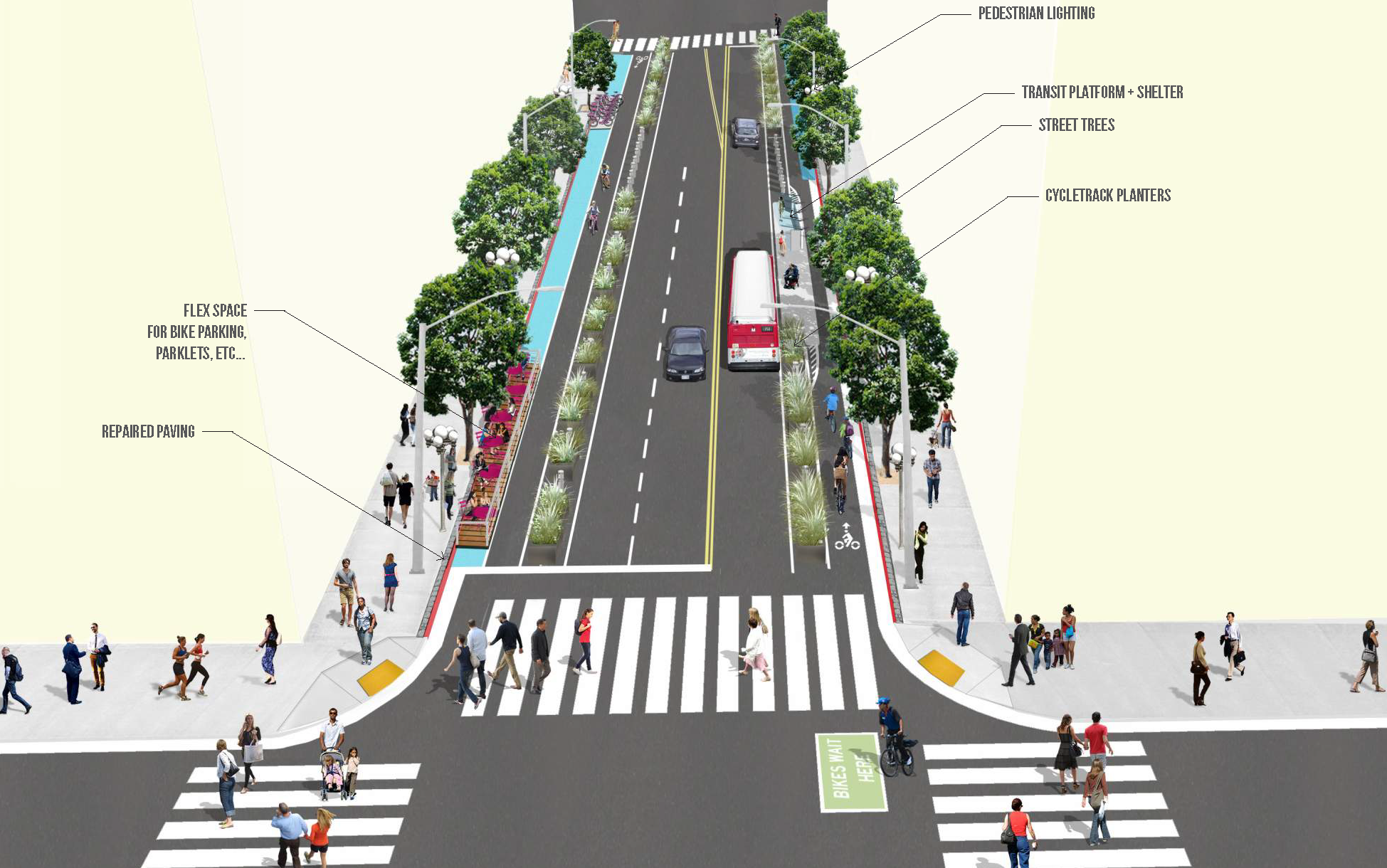Improvements funded by the developer of the 73-story Wilshire Grand project will make Downtown Los Angeles' main thoroughfare a better place to walk, bike, and use public transit.

Thanks to funds contributed by the developer of the Wilshire Grand Center, improvements are coming to a stretch of Seventh Street between Figueroa and Olive Streets, as well as to the bridges which carry Wilshire Boulevard and Seventh Street above the Harbor Freeway.
These improvements will include:
- A new scramble crossing at the intersection of Seventh and Figueroa Streets, stopping all automobile traffic to allow pedestrians to cross in any direction at once. Three other intersections will receive the now standard "zebra," crosswalk markings.
- Four blocks of protected bike lanes. Planters will be used to create the protective buffer between the bicycle lane and automobile traffic.
- Raised transit platforms and bus shelters between curbside bus lanes and and automobile lanes, offering transit patrons a waiting area away from sidewalk traffic.
- Sidewalk "bulbouts" at various points, calming traffic and shortening pedestrian crossing distance
- A strip of "flex space" (the blue painted area in the rendering) between the bike lanes and sidewalks. This space could be utilized for a variety of future uses, including bike corrals, parklets, and outdoor dining.
- Street trees spaced at a more consistent intervals and replaced where needed. The species of replacement tree used will most likely be Brisbane Box, Australian Willow, or California Bay. Tree boxes will also be enlarged to better accommodate landscaping.
- New pedestrian lighting, spaced out at more regular intervals than current conditions.
- New wayfinding signage and new light pole banners, utilizing a consistent branding and color scheme which plays off the architectural motifs of buildings on Seventh Street.
FULL STORY: DTLA's New and Improved Seventh Street

Planetizen Federal Action Tracker
A weekly monitor of how Trump’s orders and actions are impacting planners and planning in America.

Chicago’s Ghost Rails
Just beneath the surface of the modern city lie the remnants of its expansive early 20th-century streetcar system.

Amtrak Cutting Jobs, Funding to High-Speed Rail
The agency plans to cut 10 percent of its workforce and has confirmed it will not fund new high-speed rail projects.

Ohio Forces Data Centers to Prepay for Power
Utilities are calling on states to hold data center operators responsible for new energy demands to prevent leaving consumers on the hook for their bills.

MARTA CEO Steps Down Amid Citizenship Concerns
MARTA’s board announced Thursday that its chief, who is from Canada, is resigning due to questions about his immigration status.

Silicon Valley ‘Bike Superhighway’ Awarded $14M State Grant
A Caltrans grant brings the 10-mile Central Bikeway project connecting Santa Clara and East San Jose closer to fruition.
Urban Design for Planners 1: Software Tools
This six-course series explores essential urban design concepts using open source software and equips planners with the tools they need to participate fully in the urban design process.
Planning for Universal Design
Learn the tools for implementing Universal Design in planning regulations.
Caltrans
City of Fort Worth
Mpact (founded as Rail~Volution)
City of Camden Redevelopment Agency
City of Astoria
City of Portland
City of Laramie




























